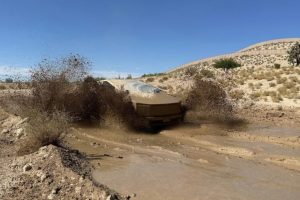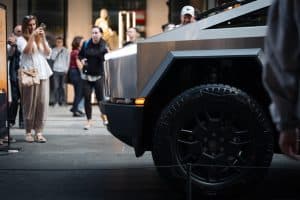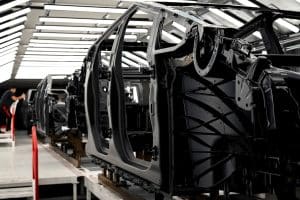- 🚙 A Tesla Cybertruck with Texas plates was spotted in San Jose, California.
- 📸 Images of the Cybertruck with a rooftop sensor suite were shared on social media platform X.
- 🚚 The Cybertruck seen was a Release Candidate (RC) unit featuring LiDAR sensors.
- 🔍 The rooftop sensor suite included sensors extending into the truck bed, differing from typical Tesla models.
- 📊 Tesla uses LiDAR-equipped test vehicles for gathering and validating vision data.
- 📜 A previous patent outlined Tesla’s practice of using auxiliary sensors to train machine learning models.
- 🚫 Despite deliveries since late 2023, the Cybertruck lacks Autopilot or Full Self-Driving (FSD) features.
Tesla has once again captured the curiosity of the automotive world with the recent sighting of a unique Cybertruck in San Jose, California. Equipped with a rooftop sensor suite, this Release Candidate (RC) unit is more than just a mainstay on the roads; it’s a rolling laboratory for future automotive technologies. In this post, we’ll delve deep into what this sighting means for Tesla and the future of autonomous driving.
Tesla Cybertruck Sighting
Tesla’s vision for the future of automotive technology took a bold step forward when a Cybertruck fitted with a rooftop sensor suite was recently spotted in San Jose, California. This sighting has ignited conversations among EV enthusiasts and industry experts alike. With Texas plates and a unique array of sensors, this Cybertruck appears to be part of Tesla’s ongoing efforts to perfect autonomous driving capabilities. Let’s break down what this sighting might mean for the future of driving.
The Unique Features of the Spotted Cybertruck
Rooftop Sensor Suite
The most eye-catching feature of this particular Cybertruck is its rooftop sensor suite. The sensors, which include LiDAR, extend beyond the roof and into the truck bed—a notable divergence from the typical Tesla models like the Model Y and Model X.
Release Candidate (RC) Unit
This unit was identified as a Release Candidate (RC), indicating that it’s a near-final version used for extensive testing before mass production. The presence of LiDAR suggests that Tesla is leveraging this technology to gather critical data for refining their autonomous systems.
Understanding Tesla’s Use of LiDAR Technology
Gathering and Validating Vision Data
Tesla has been known to use LiDAR-equipped test vehicles to collect and validate vision data. This data is essential for training machine learning models, which are fundamental to advancing autonomous driving technologies.
The Controversy of LiDAR
While Tesla’s CEO, Elon Musk, has publicly been skeptical about the need for LiDAR in production vehicles, the practice of employing it in test units showcases its importance in data collection and system validation. A previous Tesla patent highlighted the use of auxiliary sensors like LiDAR for this very purpose.
Implications for Tesla’s Autonomous Driving Features
Despite being delivered to customers since late 2023, the Cybertruck still lacks basic features like Autopilot and Full Self-Driving (FSD) capabilities. This creates a unique dichotomy for Cybertruck owners, who drive a vehicle imbued with Tesla’s cutting-edge innovations like steer-by-wire but miss out on some functionalities available even in the most affordable Model 3.
Training Data and Machine Learning
The primary use of the sensor suite in this Cybertruck is likely for collecting training data to improve Tesla’s machine learning models. This aligns with Tesla’s broader strategy of using real-world data to perfect their autonomous systems.
The Future of Tesla’s Autonomous Driving
Roadmap and Challenges
While this sighting hints at significant behind-the-scenes advancements, Tesla still faces challenges in rolling out fully autonomous features. Regulatory hurdles, technological limitations, and the need for comprehensive real-world testing are just a few of the obstacles Tesla must overcome.
Customer Expectations
As Tesla navigates these challenges, managing customer expectations will be crucial. Owners of advanced vehicles like the Cybertruck will expect continual improvements and updates, especially in autonomous driving features.
Conclusion
The sighting of a Tesla Cybertruck in San Jose with an advanced rooftop sensor suite provides more than just a glimpse into Tesla’s testing processes; it signifies the brand’s relentless pursuit of innovation in autonomous driving. While there are challenges to be addressed, the data collected from these RC units will be invaluable in refining Tesla’s machine learning models and ultimately bringing more advanced autonomous features to market.





